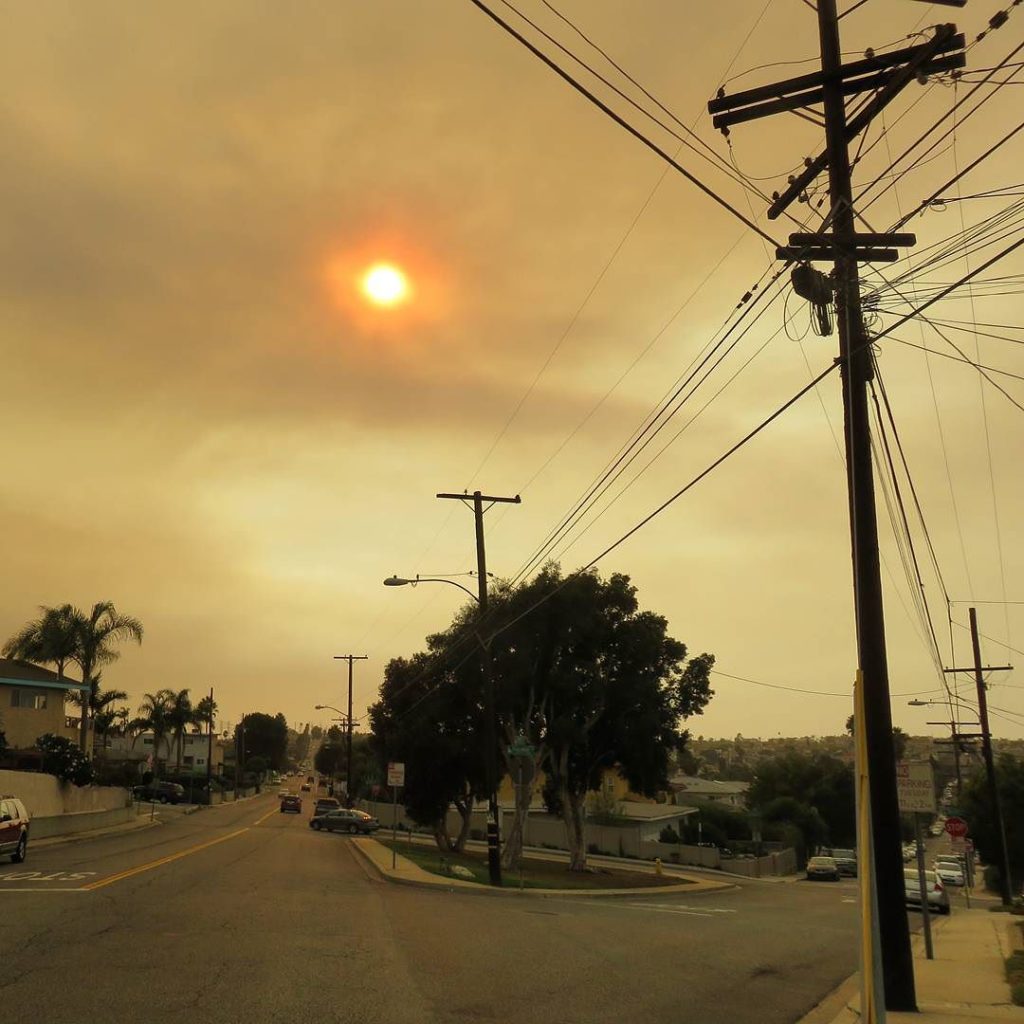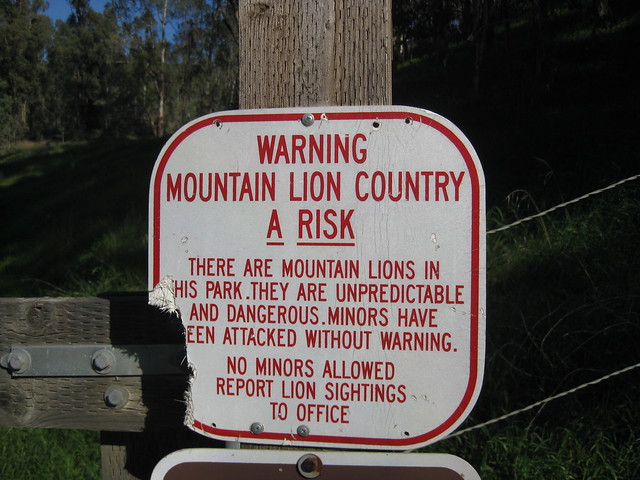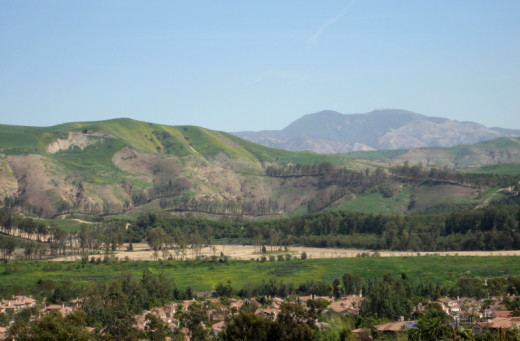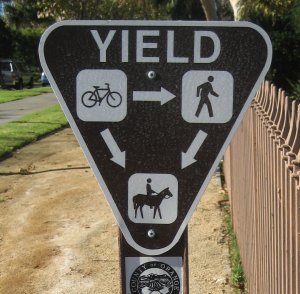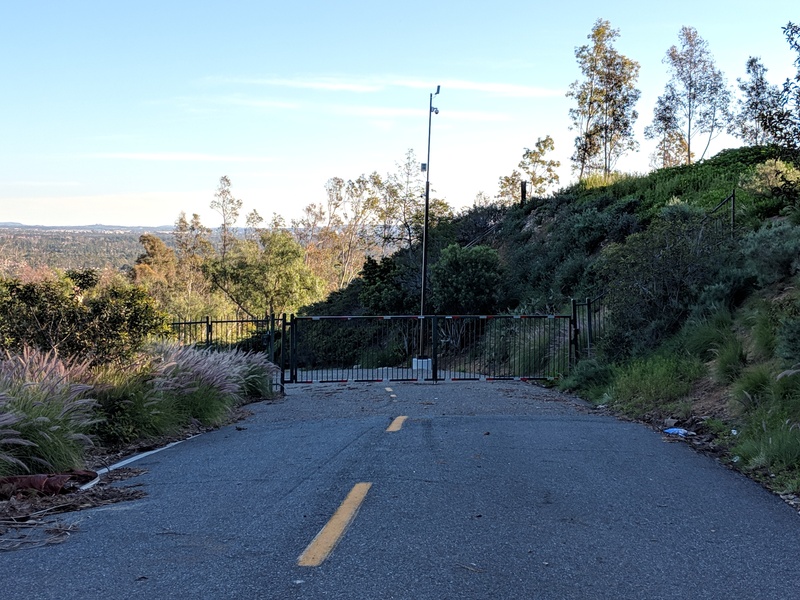
I’ve been looking through photos from back when we could, you know, go places and found a set from the hills above North Tustin during a year that we got enough rain to turn the hills green. There were some really clear shots of Peters Canyon, Saddleback, and even some south Orange County hills that I couldn’t identify. There was a spot that I remember being a turn-out that’s finally eroded away to the point that it’s been fenced off.
And there was this gate, which I think might have been across the road to Camp Myford, a Boy Scout camp on the Irvine Ranch that closed back in the late 1980s. I remember working as a camp counselor for a Cub Scout day camp during the last month — possibly the last week — it remained operating, before the bulldozers came in.
I remember lots of eucalyptus trees, hiking trails and dirt roads, a couple of buildings (though I couldn’t tell you what was in them), a fire ring, and a whole lot of giant pipes that were going to become the sewers and storm drains of the housing tract that was going to be built any moment now. And I remember being told in no uncertain terms that we were supposed to watch our language around the impressionable younger boys (who were, of course, a lot more foul-mouthed than we were).
And I found this article through the Tustin Area Historical Society, summarizing the history of the canyon as far back as the Mexican Rancho system, when it was named Cañon de las Ranas (Canyon of the Frogs) because it drained into the Newport Back Bay, known then as the Marsh of the Frogs.
Peters Canyon was once Canyon of the Frogs
Camp Myford, an Irvine Co. gift to the Orange County Council Boy Scouts of America, was named for James Irvine’s youngest son. Peter’s Canyon Regional Park offers a well-used oasis of wilderness amid the sprawl of development in the North Tustin area…
